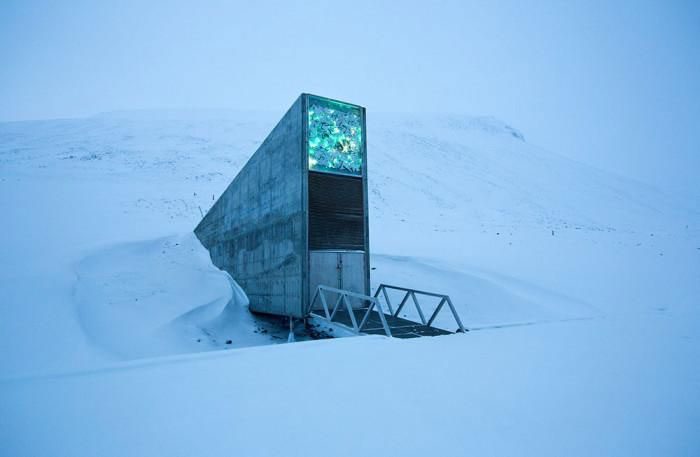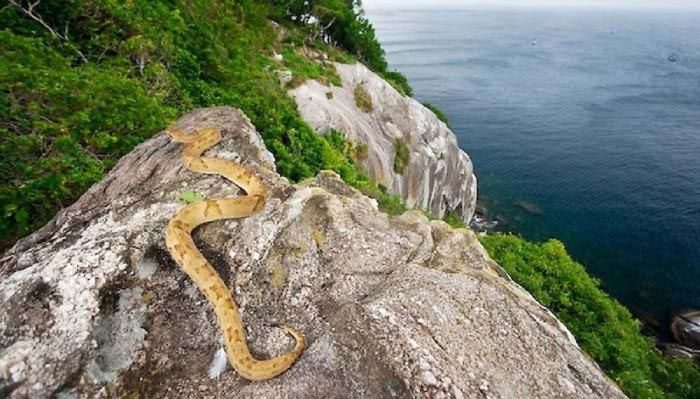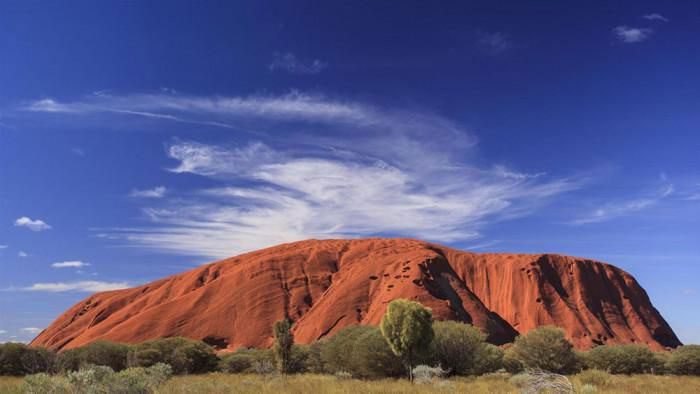There are certain locations that are off-limits to the general public for reasons of security, legality, or scientific research.
Places Around the World That Are Not Open to Everyone
1. Svalbard Global Seed Vault (Norway)
In the event of a disaster that threatens the extinction of humans, animals, and plants, this facility serves as humanity’s savior.
The Svalbard Global Seed Vault, often referred to as a seed bank, was completed in 2008 in Norway. If humanity needs to replant everything from scratch, they can use the seeds stored here.

The Svalbard Global Seed Vault is the world’s seed bank.
The seed bank is located in Spitsbergen, Svalbard—a remote archipelago in the Arctic, about 1,300 km from nearby sandstone mountain ranges.
Situated at an elevation of 130 meters above sea level, this location is ideal for keeping seeds dry.
The surrounding permafrost also helps preserve the hundreds of thousands of samples stored in the vault.
While the seeds can be securely preserved, the general public is strictly prohibited from entering.
There is a very tight security system in place to ensure the seeds remain viable for thousands of years.
2. Ilha da Queimada (Brazil)
Ilha da Queimada, also known as Snake Island, spans 43 hectares and is located off the coast of Brazil. This is not an ideal spot for a vacation.
Hundreds of different species of venomous snakes inhabit this island. These snakes are so dangerous that a single bite can render prey animals immobile.

Hundreds of different species of venomous snakes live here.
There are approximately 1 to 5 snakes per square meter on the island. Therefore, to ensure the safety of the public, the Brazilian government prohibits anyone from setting foot on this island.
The only exception is for scientific researchers, who must be accompanied by a doctor when visiting the island.
3. Lascaux Caves (France)
The Lascaux Caves were discovered accidentally in 1940 by four teenagers searching for their missing pet dog.
Following the dog, they stumbled upon a cave filled with stunning wall paintings. These paintings of deer and horses are estimated to be around 17,000 years old.
It can be said that this is one of the few places with some of the best-preserved prehistoric paintings ever discovered.
Among these, there are approximately 600 paintings and 1,000 sculptures.

The cave contains many ancient paintings dating back approximately 17,000 years.
Eight years later, the Lascaux Caves opened to the public. However, in 1963, the site was closed due to mold beginning to appear on the cave walls.
According to scientists, the mold could destroy all the paintings here. Previously, the cave had been found sealed off.
However, after its discovery, outside air rushed in, and human contact allowed certain types of mold to thrive.
For this reason, access to the cave is strictly limited for visitors.
Today, a replica has been built nearby so that people can comfortably explore the ancient world.
4. Ayers Rock (Australia)
Ayers Rock, also known as Uluru, is located in a remote area of Australia. It has been a popular tourist destination for many years.
However, recently it has been added to the list of restricted places for tourists.
Previously, despite temperatures soaring to 47 degrees Celsius in summer, tourists still attempted to climb the 348-meter-high rock. The journey to conquer this monolith is extremely challenging.

This is a sacred site for the Anangu people.
Uluru is a very sacred place for the Anangu people, who are the guardians of this massive rock formation. They have long wished for tourists to stop climbing it.
Eventually, their wishes were supported by the management of the Uluru-Kata Tjuta National Park. In 2017, a ban on climbing Uluru was enacted.
On October 25, 2019, the last day that people were allowed to climb Uluru before the ban took effect, tourists formed an extremely long line.
Tourists can still visit Uluru-Kata Tjuta National Park but can only view the sacred rock from a distance, never to set foot on it again.





















































